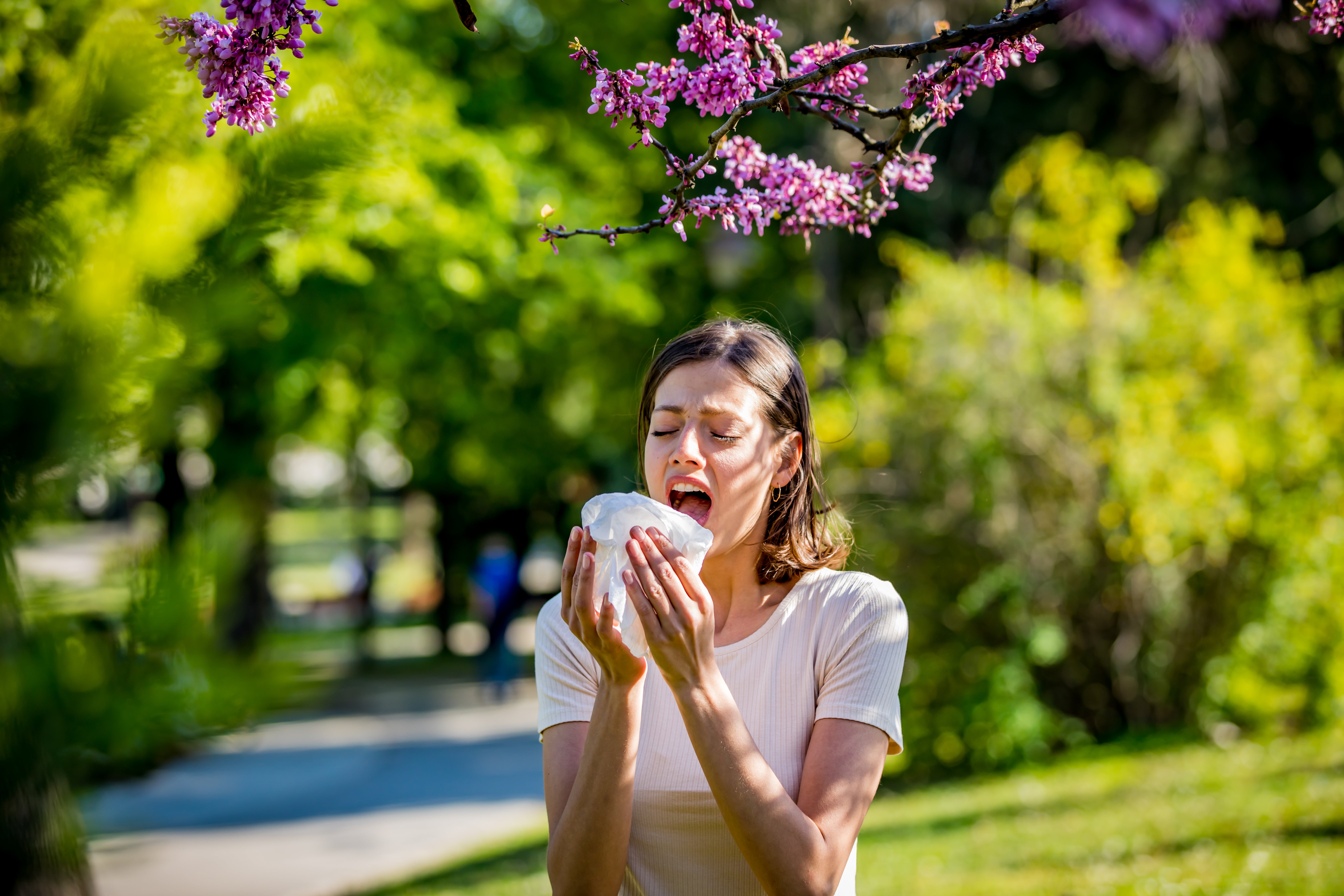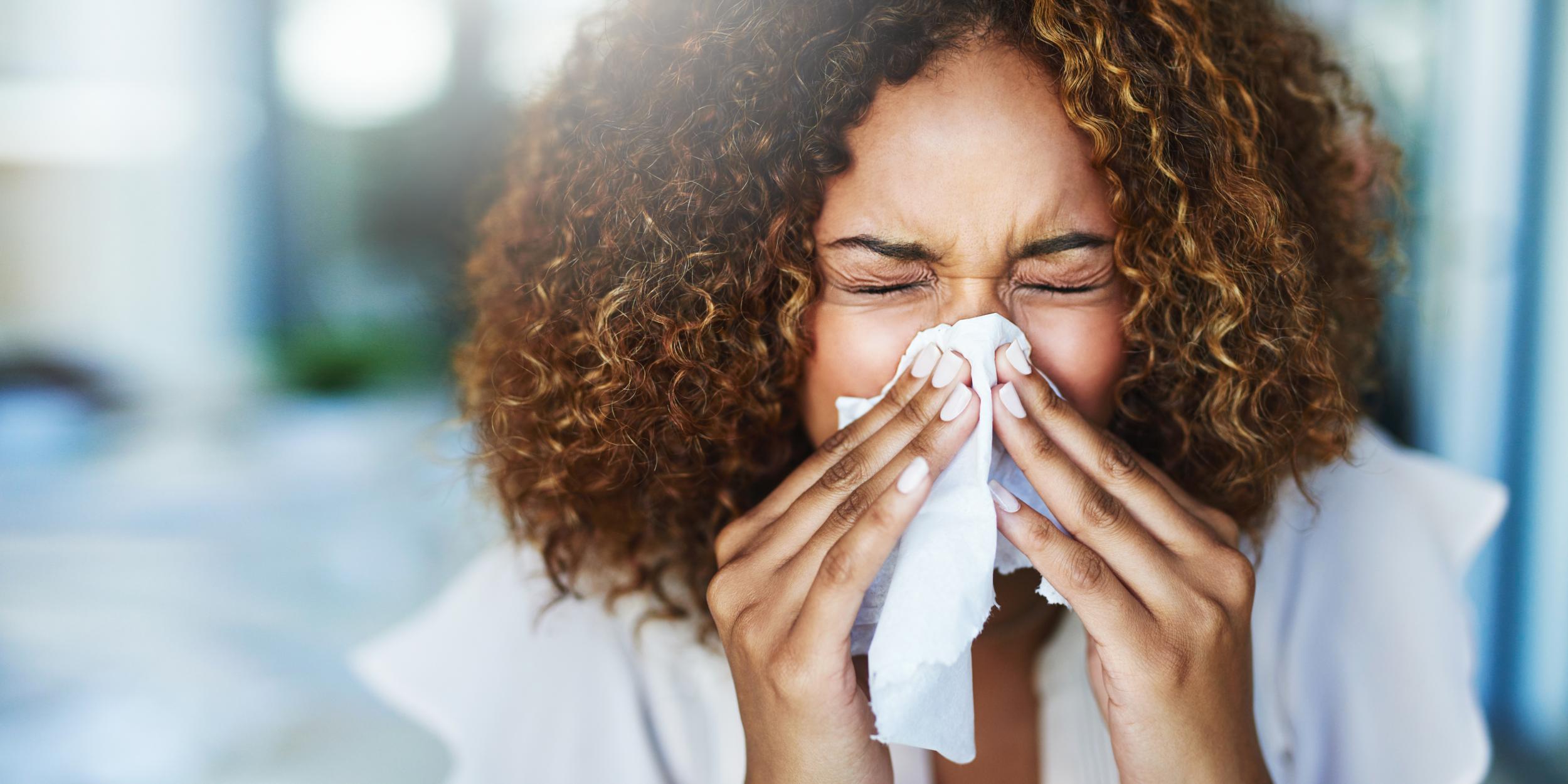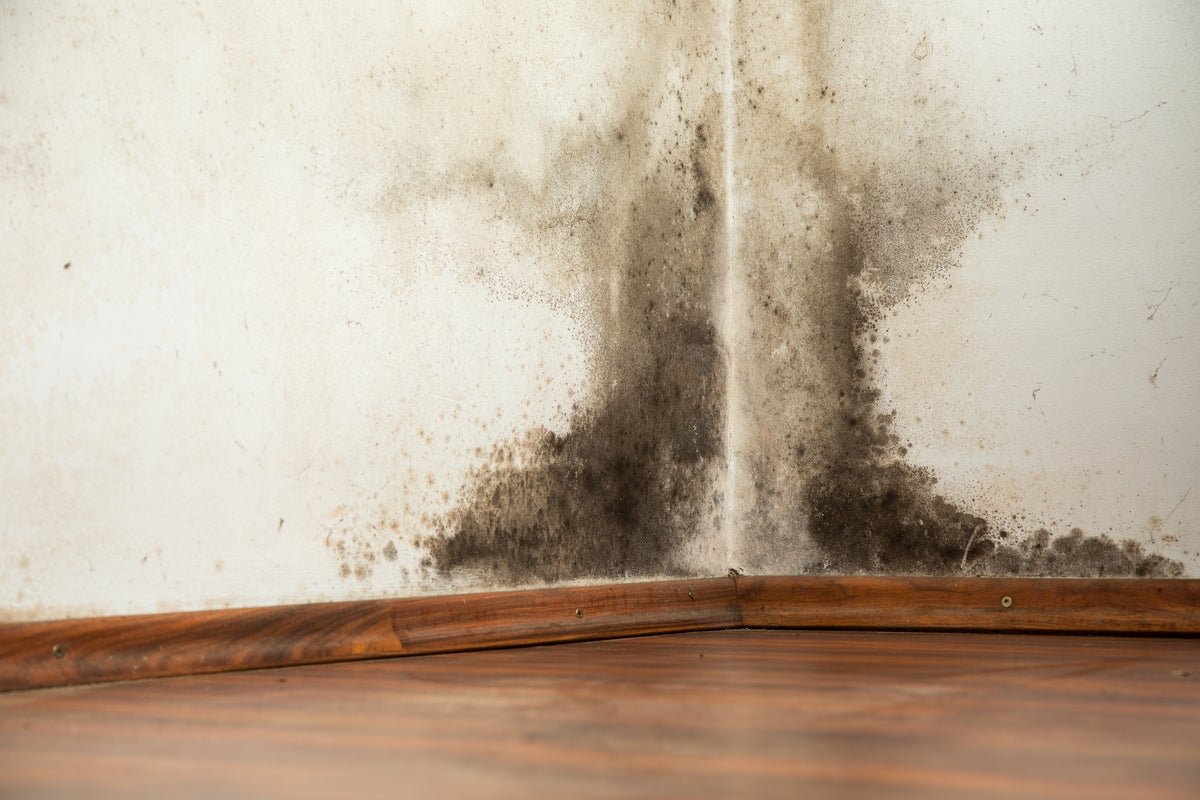Itchy eyes, running nose, scratchy throat: hay fever season is upon us and, according to experts, those with allergies are suffering worse than ever.
Climate change and pollution have lengthened and intensified pollen seasons, so trees and grasses now release allergens earlier and for longer. Plus, urban smog may even make pollen grains more potent.
Essentially, it’s hell out there.
More than 10 million people in Britain suffer from hay fever, according to the Met Office and, obviously, the number one way to reduce hay fever symptoms is to stay entirely inside to cut your pollen exposure as much as possible. But what kind of spring and summer would that be?
So, here are 10 tips on how to survive allergy season with your nostrils, tear ducts, and social calendar intact, from someone who’s been suffering for their entire life…
Keep the windows shut
Yes, it might be boiling and yes, that breeze might be nice but if you open the window the pollen is coming straight through the open pane to contaminate your house. So, on high-pollen days keep both windows and doors shut. It’s also wise to invest in a hoover with a HEPA-filter to suck any up that does make it through.
Shower before bed and change clothes as soon as you’re inside
If you’ve been outside, come through the front door and tread your shoes or walk your clothes through the house, you’re carrying all the pollen from outside inside with you. Ditto if you lie on your bedsheets with outside clothes on.
So, it’s best to shower and get changed as soon as you’re home and regularly wash your bed sheet in order to avoid sleeping in a tomb of pollen and waking up gasping for air.
Non-drowsy antihistamines
While non-drowsy antihistamines such as loratadine, cetirizine and fexofenadine are common first-line treatments for hay fever, research suggests fexofenadine may provide more consistent symptom relief for people with moderate to severe seasonal allergies compared to other types of antihistamines. But, each person will respond differently – so, trial and test which type provides you the most relief. Allergy tablets work best when taken daily and preemptively, ideally before peak exposure each morning. Allevia is currently the strong favourite among sufferers.

Steroid nasal sprays
If it’s a blocked nose that’s your key issue, steroid nasal sprays like fluticasone can be more effective than antihistamine pills for congestion. These work best when used from one or two weeks before allergy season begins and should be used frequently throughout the allergy-ridden months. Just keep inhaling.
Eye drops
Similarly, if itchy eyes are driving you mad, over-the-counter eye drops will help to soothe the burn and relieve redness. Squeeze one or two drops into each eye, four times a day to feel the effects. This will especially help contact lens wearers, who might notice bad discomfort during allergy season. If possible, opt for daily lenses over reusable ones, so pollen doesn’t build up on the surface of the lenses each time you wear them and cause you to be in more agony than necessary.
Vaseline or another barrier balm
Arguably TikTok’s favourite viral hay fever hack is smearing a load of Vaseline around your nostrils. Essentially, this acts as a pollen net, catching any allergy-inducing powder before it makes its way up your nose to cause chaos. Vaseline can be a little sticky, and it doesn’t look the best. So, another option is a balm with a firmer texture, like HayMax, which will do the same job.
Air purifier with hepa filter
Inside, you can use a HEPA air purifier or high-MERV filters in your heating or cooling system. These will capture airborne pollen particles, which may help to reduce the severity of your symptoms during high-pollen seasons. Between that, the hoover and the frequent showering, you should be halfway to keeping your house pollen free. It truly does get everywhere. Find the best air purifiers here.

Wraparound sunglasses
Gen Z’s favourite pop icon Charli XCX loves wraparound sunglasses and, it turns out, they’re effective in keeping pollen away from your eyes, too. Best used in combo with the nasal spray, antihistamines and eye drops, shades with curved frames can provide an additional barrier between your eyes and the pollen drifting through the air.
Anti allergy bedding
If you’re struggling to sleep at night, hypoallergenic bedding can be a smart investment to keep the symptoms at bay.
Anti allergy duvets use hollowfibre rather than feather alternatives, which reduces the chance of pollen or dust building up at night because it’s less likely to get trapped inside. Genius.
Stay hydrated
Keeping your thirst quenched is good advice for the spring and summer months anyway. But it turns out when your body is dehydrated, it can produce more histamine, which will make your allergies worse, too. It’s bad news when there’s a boozy weekend planned because some alcoholic drinks contain histamines – red wine, beer and aged liquors are considered the worst offenders.
However, according to Asthma UK, drinking gin and tonics can actually soothe hay fever symptoms. Do with that information what you will.
#tips #surviving #hay #fever #season #work #lifelong #sufferer



